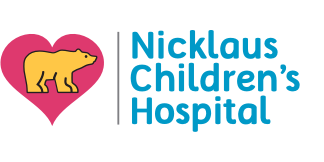- Parents Home
- Para Padres
- Allergy Center
- Asthma Center
- Cancer Center
- Diabetes Center
- Diseases & Conditions
- Doctors & Hospitals
- Emotions & Behavior
- First Aid & Safety
- Flu Center
- Food Allergy Center
- General Health
- Growth & Development
- Heart Health
- Homework Help Center
- Infections
- Newborn Center
- Nutrition & Fitness Center
- Play & Learn Center
- Pregnancy Center
- Q&A
- Recipes
- School & Family Life
- Sports Medicine Center
- Videos
- Kids Home
- Para Niños
- Asthma Center
- Cancer Center
- Diabetes Center
- Feelings
- Getting Help
- Health Problems
- Health Problems of Grown-Ups
- Heart Center
- Homework Center
- How the Body Works
- Illnesses & Injuries
- Kids' Medical Dictionary
- Movies & More
- Nutrition & Fitness Center
- Puberty & Growing Up
- Q&A
- Recipes & Cooking
- Relax & Unwind Center
- Stay Safe Center
- Staying Healthy
- Staying Safe
- Videos
- Teens Home
- Para Adolescentes
- Asthma Center
- Be Your Best Self Center
- Cancer Center
- Diabetes Center
- Diseases & Conditions
- Drugs & Alcohol
- Expert Answers (Q&A)
- Flu Center
- Homework Help Center
- Infections
- Managing Your Medical Care
- Managing Your Weight
- Nutrition & Fitness Center
- Recipes
- Safety & First Aid
- School & Work
- Sports Center
- Stress & Coping Center
- Videos
- Your Body
- Your Mind
Tourette Syndrome Factsheet (for Schools)
What Teachers Should Know
Tourette syndrome is a genetic condition that causes uncontrolled sudden, repetitive muscle movements and sounds known as tics. Experts don't know the exact cause of Tourette syndrome, but there may be problems with how nerve cells communicate.
The main symptoms of Tourette syndrome are motor tics (sudden, uncontrollable movements such as eye blinking, grimacing, head jerking, or shoulder shrugging) or vocal tics (such as throat clearing, sniffing, or humming). Complex motor tics may include jumping, touching other people, or, very rarely, biting or hitting self. Complex vocal tics can involve repeating other people's words (called echolalia) or involuntary swearing (called coprolalia).
At certain times, such as stressful situations, tics can become more severe, more frequent, or longer. Tourette syndrome usually emerges in childhood or adolescence and is more common in boys. While there is no cure for Tourette syndrome, doctors can prescribe medicines to help control symptoms that interfere with schoolwork or daily life.
It's common for people with Tourette syndrome to have other conditions too, such as ADHD, OCD, learning disabilities, or sleep problems.
Students with Tourette syndrome may:
- say or do inappropriate things
- have difficulty concentrating in class because they are focusing on trying to control tics
- need to have breaks from instruction to release symptoms or use relaxation techniques to help reduce the frequency or intensity of tics
- be absent from school or dislike school because they are embarrassed by their tics
- have poor school performance
Tourette syndrome is a neurological condition, not a psychological one. But it can cause psychological distress in students, and this distress can make the tics more severe.
What Teachers Can Do
Students with Tourette syndrome face a significantly higher risk of being bullied. Counselors and Tourette syndrome organizations can help you and your students learn how to explain the tics to others. When possible, ignore tics and look for ways to reduce classroom stress.
Make sure to give special consideration regarding instruction, assignments, and testing, especially if your student misses class time due to medical appointments or counseling.
Students with Tourette syndrome can participate in school sports, phys-ed, and extracurricular activities. Encouraging them to participate is a great way for students to focus their mental and physical energy and improve socialization and peer interaction.

© 1995- The Nemours Foundation. KidsHealth® is a registered trademark of The Nemours Foundation. All rights reserved.
Images sourced by The Nemours Foundation and Getty Images.

